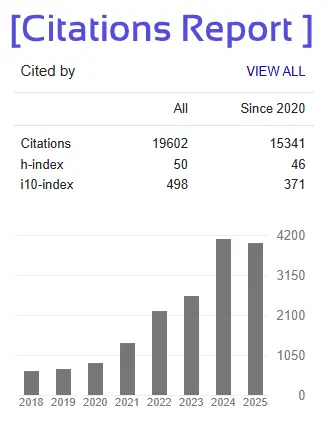- Version
- Download 99
- File Size 252.69 KB
- File Count 1
- Create Date 19/05/2025
- Last Updated 19/05/2025
A Statistical Study on Mental Wellbeing: Measuring Stress and Anxiety Levels Among Youth
Ms Komal
Assistant Professor
Department of Management, Rayat Bahra University, Mohali
komaluniyal3@gmail.com
Ms Anmol Kaur
Assistant Professor
Department of Commerce, Rayat Bahra University, Mohali
Ms Ritu
Assistant Professor
Department of Management, Quest Group of Institution, Mohali
Abstract
In today’s increasingly competitive academic landscape, students are under immense pressure to perform well. This pressure does not solely stem from academic demands but is significantly heightened by expectations from parents and society. As a result, university students' mental health has emerged as a critical global public health concern. This study aims to investigate the impact of stress and anxiety on students' mental health, with a specific focus on a group of students enrolled in a private university in the Punjab region of India. The research explores various dimensions of academic stress, emotional well-being, and how students cope with increasing demands in their educational environment.
The study highlights that stress and anxiety among students are multifaceted issues influenced by academic workload, time constraints, performance expectations, and personal responsibilities. One of the key findings is that students often struggle with time management, leading to poor sleep patterns and difficulty balancing academic and extracurricular activities. These challenges contribute to a heightened sense of stress and fatigue, which, over time, negatively affects mental health. The survey data indicates that 21.8% of the participating students have been clinically diagnosed with a mental health disorder, a figure that underscores the severity of the problem.
Moreover, the findings reveal that a significant number of students find it hard to relax, even during their leisure time. This inability to mentally disconnect from academic stress reflects chronic anxiety and constant psychological pressure. The research also shows that young students tend to become easily overwhelmed by responsibilities, particularly when these responsibilities involve managing coursework, meeting deadlines, and preparing for exams. Many of them report feeling emotionally drained and lacking the coping skills needed to manage these demands effectively.
Despite these concerning trends, a major barrier to addressing student mental health is the prevailing social stigma around seeking psychological support. The fear of judgment or being perceived as weak prevents many students from reaching out for professional help, thereby compounding the issue. This reluctance not only delays necessary intervention but also allows stress and anxiety to escalate, leading to more serious mental health outcomes over time.
The implications of these findings are significant. If left unaddressed, the high levels of stress and anxiety experienced by students can disrupt their academic performance, impair their social relationships, and hinder their overall personal development. Therefore, it is imperative that universities take proactive steps to address these challenges. The development and implementation of comprehensive mental health services—including counseling, stress management workshops, and awareness campaigns—are essential. Additionally, fostering a supportive campus environment where mental health is openly discussed and prioritized can help reduce stigma and encourage students to seek help when needed.
In conclusion, the study sheds light on the critical need for educational institutions to recognize and respond to the mental health challenges faced by students. By addressing key risk factors and promoting mental well-being, universities can help students build resilience, enhance academic success, and support healthier developmental pathways for the youth.
Keywords: Mental health, stress, anxiety, youth, psychosocial factors, intervention.







